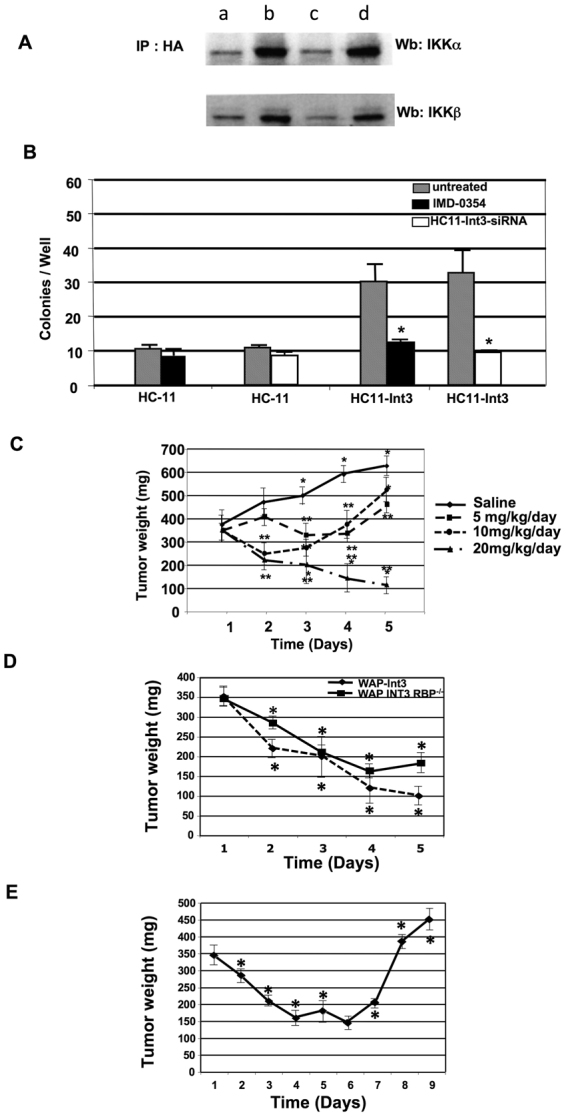Figure 3.

The interaction between Int3 and IKKα and IKKβ. (A) Co-immuno-precipitation of Int3 with IKKα and IKKβ. Protein extract were prepared from untreated (a) HC11, (b) HC11-Int3 cells and HC11 Int3 cells treated with either (c) Int3-siRNA or (d) Rbpj-siRNA (d) were immunoprecipitated with HA antibody. The immunoprecipitates were analyzed by Western blot analysis using IKKα or IKKβ antibody as described in the Materials and Methods. Decreased levels of IKKα and IKKβ were bound to Int3 in HC11-Int3 cells treated with Int3 siRNA as compared to untreated cell or cells treated with Rbpj siRNA. (B) Int3 transformation ability is IKKβ dependent. Blocking of IKKβ with inhibitor IMD-0354 (5 μM) in HC11-Int3 caused a significant reduction in colony formation in soft agar assay. The reduction is comparable to blocking of Int3 expression by siRNA. (C) Treatment of WAP-Int3 tumor bearing mice with the IKKβ inhibitor IMD-0354. A dose response to 5, 10 and 20 mg/kg/day of IMD-0354. Note that the tumors regressed in the tumor bearing mice receiving 20 mg/kg/day. *Significantly different than day 1, **significantly different from saline control. n = 8 mice/time point. (D) Effect of IMD-0354 treatment on WAP-Int3 Rbpj−/− mammary tumors. WAP-Int3 and WAP-Int3 Rbpj−/− tumor bearing mice were treated for 5 days with 20 mg/kg/day. *Significantly different from day 1. Note that the tumor regression in both strains was virtually identical. n = 8 mice/time point (E) When treatment was terminated (day 5) the tumors grew back. n = 8 mice/time point.
